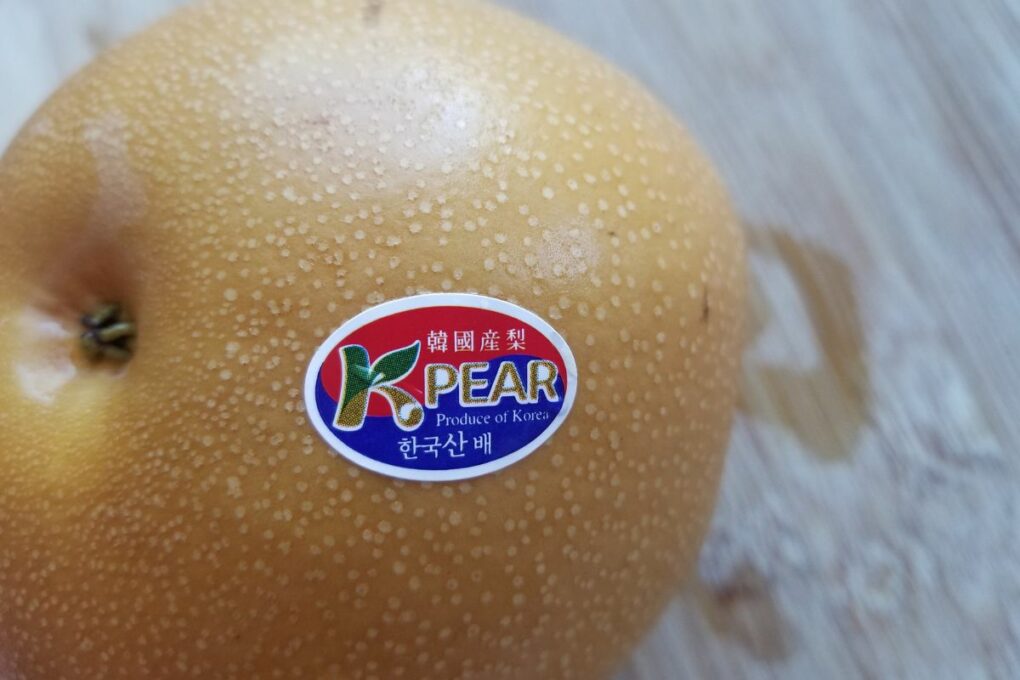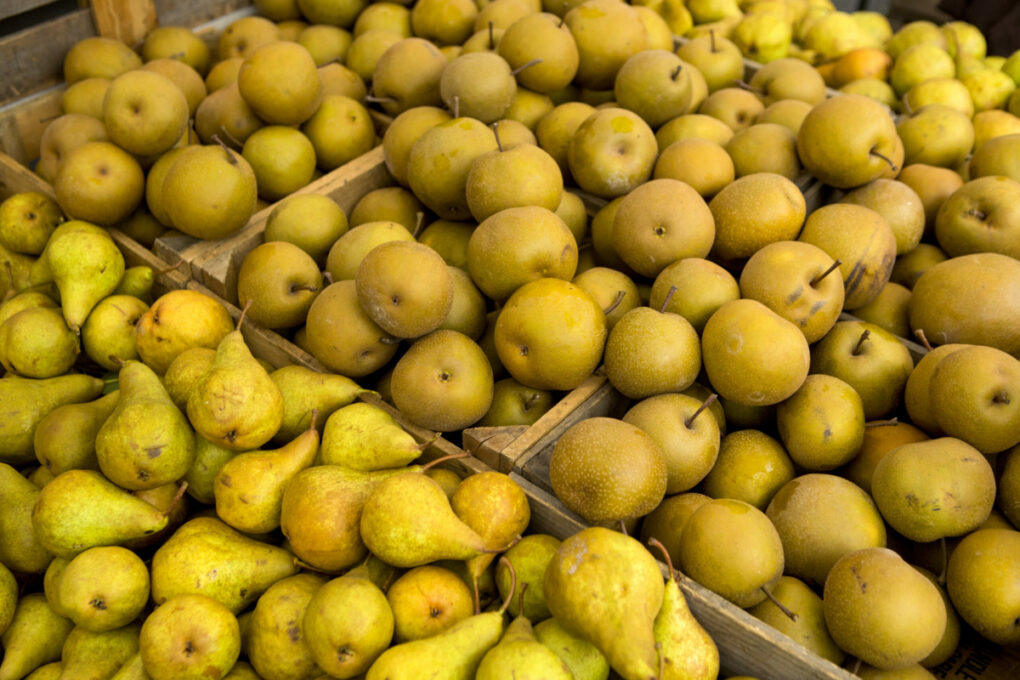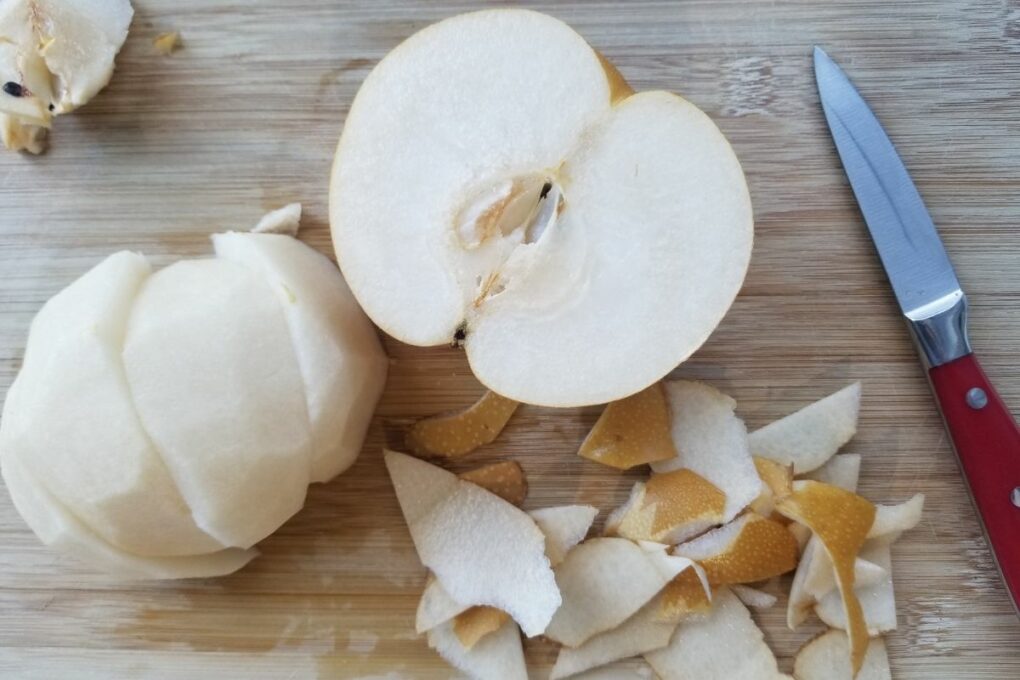Also known as Asian pears and sometimes apple pears, Korean pears are uniquely large and juicy fruits that people in Asia, particularly in Japan & Korea, have been enjoying for centuries. With rampant international travel worldwide, people can now access foreign food like Korean fruits when they weren't able to find them in local stores before.
Despite their rise in popularity, do you know how to identify if what you’re purchasing are the famous pears from Korea? If you’re interested in learning more about apple pears, this guide will teach you everything from their characteristics, size & shape, color, and flavor profile to pricing and availability.

Characteristics Of Korean Pears
Originating in East Asia, these rounded pears are notable for their large and more spherical composition. Korean pears aren’t just fruits that come from the country; they're also named after it, and are even described as a combination of a Bosc pear and a big green apple, gaining the name apple pear.
There are other notable characteristics of apple pears you should look out for.
Size & Shape
Asian pears have a distinctive round shape that looks more like an apple, with a wider base instead of the traditional ‘pear shape.’The pears from Korea are also bigger in size compared to what you’re used to in the U.S. The smallest apple pears are similar in size to small apples with an average weight ranging from 8 to 10 ounces.
Color
These unique pears from Korea have a golden to brownish-yellow dominant color and a slight greenish tinge. The texture of the innards look similar to an apple with its white flesh, hence the name.

Flavor Profile
Bae, which is Korean for pear, have a distinct flavor profile that makes them popular with both locals and foreigners.
The pears have a subtle floral scent, which becomes more pronounced as the fruit ripens, adding to its appeal. Also when bitten, they have a crisp and crunchy texture similar to apples, even when ripe, unlike traditional pears, which soften over time. They do, however, have a slightly waxy texture on the outside.
When ripe, Korean pears have a flavor that is comparable to honey and lemon. The high sugar content (12% to 18%) accounts for the gentle and pleasant sweetness. Because of their low acidity, these apple pears have a more pleasant and juicy taste when bitten into.
In general, Korean pears are more like standard apples rather than traditional pears. It’s the very reason why they're known as apple pears in the first place. This sweet flavor easily transfers to any dish when added and used in a recipe.
Pricing
Korean pears are significantly more expensive compared to other types of pears. They are considered premium products because of their size and unique flavor profile. The prices can also vary based on the region and the current season.
In your local Target, when they’re in season in the fall you can find a pack of 3 apple pears just for $5, while they usually cost around $3.49 each in Whole Foods, Korean markets, and other fancy supermarkets.
Availability
The availability of Asian pears depends heavily on the season, as they are usually available from late summer, all through fall in Korea and into early winter. You can easily find these pears in Korea from local stores starting in September and going into January, though the peak season is from October to December. These are the best times to buy since they’ll be the freshest!
Korean pears are grown in California, Oregon, and Washington, but you can easily find them in Asian markets and some supermarkets when in season, often shipped directly from Korea.

Korean Pears Vs. American Pears
Apple pears can be easily identified from their large size and round shape. But this is only one of the many factors where they are different compared to the traditional American pears. Here is a summary of their differences.
| Elements | Korean Pears | American Pears |
| Size | Larger & shorter | Smaller but taller |
| Shape | Round (similar to an apple) | Similar to the shape of the number 8 |
| Color | Golden to brownish yellow with dark freckles (Outside) and White (Inside) | Greenish brown to yellow (Outside) and White (inside) |
| Flavor | Sweet and slightly tart | Sweeter and softer |
| Texture | Crisp texture and crunchy, Hard even when ripe | Hard when unripe, fine and soft when ripe |
| Price | More expensive ($2 to $4/each) | More affordable ($1 to $2/each) |
| Availability | October to December (peak) | July to December |
Korean pears are very different from the usual American pears you’ll see in the market as they’re large and have a shape similar to an apple. American pears have the traditional number 8 shape.
Another big difference between apple pears and the more common variety is that when they ripen, they remain hard and crunchy, as opposed to getting soft. Tastewise they are a bit tart rather than full-blown sweet.
In comparison to American pears, Korean pears are more expensive and regarded as the premium variety. This is hardly surprising since the peak season for the pears only lasts 3 months, from October to December, while the other variety is available for half a year.

How to Select Korean Pears
It's crucial to feel the fruit with your own hands when choosing Korean pears, as you get the nicest ones if they are not hard rock but merely firm. Ensure that the fruit's skin is smooth and blemish-free, and that you take a whiff, since pears from Korea have a notable sweet aroma.
Always make sure to inspect the Asian pears before you buy them and choose the ones that look most appealing to you.
Properly Storing Korean Pears
After you’ve gotten your Korean pears, storing them properly is the next important step. Newly purchased pears should be placed in a paper bag together with a banana or apple to help ripen the fruit. Once ripe, store them in the refrigerator where they can last for up to 2 weeks. Make sure to store them in a plastic bag or container to keep them fresh.
Whether you’re buying them from Korea or a nearby market, it’s best to purchase them unripe and wait for them to ripen over time.
Leftover Sliced Pears
Any leftover sliced pears should be kept in an airtight container. In such conditions they can last up to three days in the refrigerator. Of course, it’s much better to eat them right away, but with some weighing up to a pound, that can be a lot of fruit, perfect for using up in an Asian pear recipe (see below).

Cooking & Eating Korean Pears
In Korea, pears are usually eaten raw as a snack but can be used for cooking. With raw ones, you can add them to charcuterie boards, cheese plates, and even cocktails.
But if you do decide to use the pears for cooking, there are many things you can do with them. Here are some Asian pear recipes that can come in handy:
1. Korean Pear Salad
Slice 1-2 pears and mix them with your favorite salad greens, walnuts or pecans, feta or goat cheese, and dried cranberries in a large bowl. Toss and combine with balsamic vinaigrette, then serve immediately.
2. Korean Pear Salsa
Dice 2 apple pears, red onion, and jalapeno or your favorite hot pepper. Combine all the ingredients with chopped cilantro and add salt, pepper, and lime juice to taste. Serve this dish with tortilla chips or you use it as a topping on grilled fish or chicken.
3. Korean Pear and Ginger Smoothie
Peel 2 Asian pears and chop them. Mix them with a banana, cup of almond milk, tablespoon of grated fresh ginger, and a tablespoon of honey. Blend until smooth and then serve immediately.





Comments
No Comments